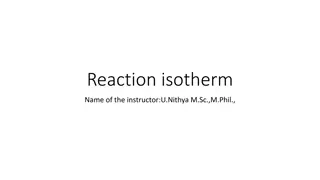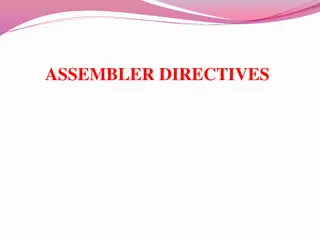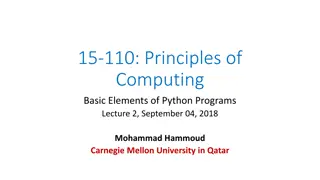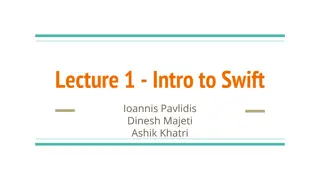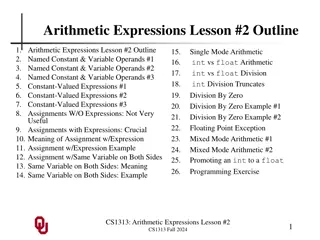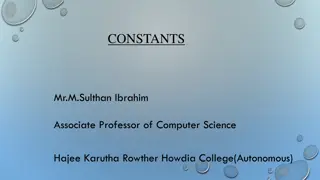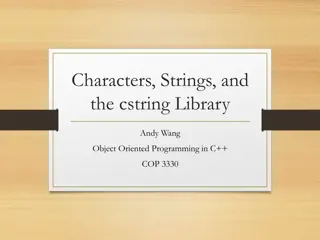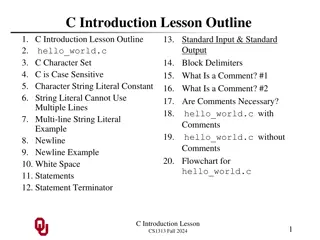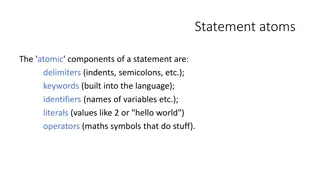Understanding Constants and Literals in C++ Programming
Constants and literals in C++ are fixed values that the program cannot alter. They come in various types such as integer numerals, floating-point numerals, characters, strings, and boolean values. Integer literals can be decimal, octal, or hexadecimal constants, while floating-point literals have integer, decimal point, fractional part, and exponent part. Boolean literals include true and false values, which are keywords in C++. Learning to use and differentiate these constants and literals is crucial for effective C++ programming.
Download Presentation

Please find below an Image/Link to download the presentation.
The content on the website is provided AS IS for your information and personal use only. It may not be sold, licensed, or shared on other websites without obtaining consent from the author. Download presentation by click this link. If you encounter any issues during the download, it is possible that the publisher has removed the file from their server.
E N D
Presentation Transcript
C++ Constants/Literals Constants refer to fixed values that the program may not alter and they are called literals. Constants can be of any of the basic data types and can be divided into Integer Numerals, Floating-Point Numerals, Characters, Strings and Boolean Values. Again, constants are treated just like regular variables except that their values cannot be modified after their definition.
Integer Literals An integer literal can be a decimal, octal, or hexadecimal constant. A prefix specifies the base or radix: 0x or 0X for hexadecimal, 0 for octal, and nothing for decimal. An integer literal can also have a suffix that is a combination of U and L, for unsigned and long, respectively. The suffix can be uppercase or lowercase and can be in any order. Here are some examples of integer literals 212 // Legal 215u // Legal 0xFeeL // Legal 078 // Illegal: 8 is not an octal digit 032UU // Illegal: cannot repeat a suffix
Following are other examples of various types of Integer literals 85 // decimal 0213 // octal 0x4b // hexadecimal 30 // int 30u // unsigned int 30l // long 30ul // unsigned long
Floating-point Literals A floating-point literal has an integer part, a decimal point, a fractional part, and an exponent part. You can represent floating point literals either in decimal form or exponential form. While representing using decimal form, you must include the decimal point, the exponent, or both and while representing using exponential form, you must include the integer part, the fractional part, or both. The signed exponent is introduced by e or E. Here are some examples of floating-point literals 3.14159 // Legal 314159E-5L // Legal 510E // Illegal: incomplete exponent 210f // Illegal: no decimal or exponent .e55 // Illegal: missing integer or fraction
Boolean Literals There are two Boolean literals and they are part of standard C++ keywords A value of true representing true. A value of false representing false. You should not consider the value of true equal to 1 and value of false equal to 0.
Thank You Thank You





